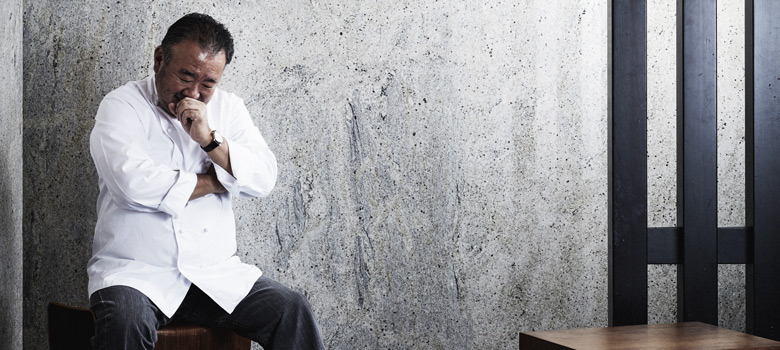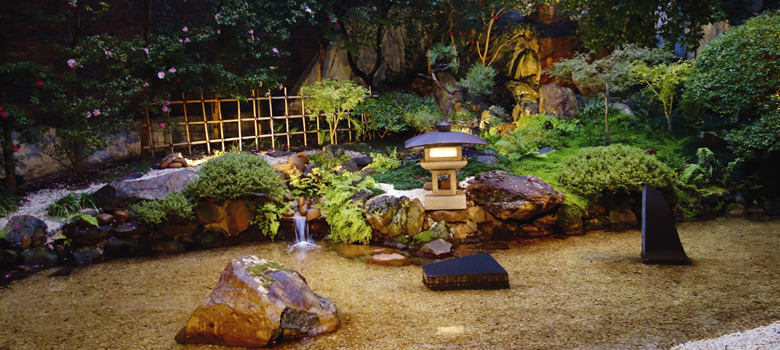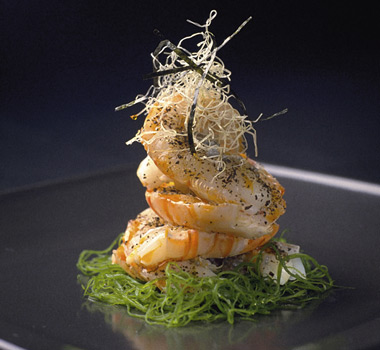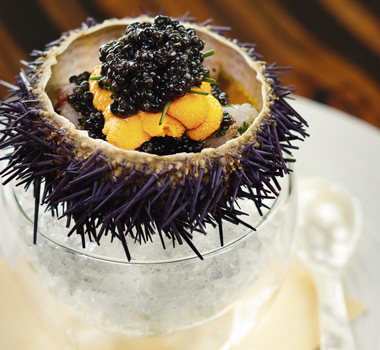
Food
The Original Tetsuya Wakuda
Tetsuya Wakuda grew up near Lake Hamana, south-west of Tokyo, an area renowned for sports fishing. As a boy, he would spend his spare time at his uncle’s charter fishing business or fishing from a small boat for goby, experiences that instilled a lifelong love of seafood, and the water.
“I hated school, but I loved the water, and boy, I loved fishing,” he recalls. “Being on the water is still my greatest relaxation, which is one of the reasons I love Sydney.”
Wakuda arrived in Sydney as a backpacker in 1982, and the city has been his home ever since. However, with two restaurants to his name, Tetsuya’s in Sydney and Waku Ghin in Singapore, Wakuda is rarely home. Constantly on the move, if he’s not in Singapore, he’s on the road visiting suppliers and unearthing new ingredients in Tasmania or Japan.
Destination, Sydney

Like Tetsuya, his restaurant’s patrons tend to be big travellers, many making the journey to Sydney just to eat his food. “Fifty percent of the guests in the dining room, often up to 70 percent on any given night, are tourists,” he says.
“Most are from Asia – Hong Kong, Singapore, Indonesia, Vietnam. I look around the dining room and wonder, am I in Sydney or am I in Singapore?” he says, laughing. “There’s also usually a handful of Americans, and often they are repeat guests.”
They come for the dish that made him famous, the Confit of Ocean Trout, again and again.
“I’ve been told that the Confit of Ocean Trout is the most photographed dish in the world,” he says. “I can’t take it off the menu. People expect it. If you go to L’Tour D’Argent in Paris, you have the duck, if you come here, then you have the trout, guests still want it and we have to listen to them.”
“For every guest, we have a record, of the first time, the 10th, the 100th time that they’ve visited. The staff will say, ‘So then, you’ve had it before, and would you like the trout again today?’, and overwhelmingly, the response is, ‘we come here for the trout’. So what can I do? It stays on the menu.”
When Tetsuya opened his first restaurant in Rozelle in 1989, it was at the height of ‘Modern Australian’ cuisine.
“People called it ‘Modern Australian’, and overseas they still do, or ‘pan-Asian’, but it’s just Australian cuisine,” he says. “It’s some kind of fusion, but we don’t have a definition. It’s not forced, it’s a natural fusion.”
“French, Italian, Japanese, Thai, there are centuries of food culture in those countries,” he continues. “They have a strong history, whereas we are a young country, so the definition of Australian cuisine evolves all the time.”
“The most interesting thing about Sydney, and Australia, as a food destination is that we are inhabited by migrants who’ve brought their own food history, ingredients and food culture with them,” he adds.
Tetsuya believes this has made an impact, not just on Australian people’s dining choices, but on their palates. While children in countries like Italy or France grow up eating Italian or French food, for Australian children, he explains, it’s different. “When a kid grows up in Sydney, they might go to yum cha on a Sunday with the family, eat a sushi roll for lunch as mum pushes them in the pram. This is all very normal because we’re in this city surrounded by a huge range of foods.”
“As a result, Australians are curious and open-minded diners and they have a broad palate,” he says. “I see it in my young chefs who’ve grown up here, they’re very accustomed to using all kinds of herbs and spices from a range of cultures. A young French chef simply does not have that broad flavour knowledge.”
Tetsuya believes that the wide variety of produce grown and raised in Australia plays a large part.
“We are fortunate that from the tropics of Cairns to the cold of Tasmania, we have many climates and microclimates, we can grow anything,” he says. “We have very good Italian, French, Vietnamese, and Chinese food because we have all of the ingredients, they don’t need to be substituted with something else. Access to such a range of ingredients is highly unusual in the world.”
Destination, Singapore


Unless of course, you import everything. A shipping hub, Singapore is ideally situated in the middle of the world, making the logistics of importing ingredients easier than in most cities. Like Australia, Singapore’s population has a large migrant component, which has influenced the island’s food culture enormously and means that local diners are likewise curious and open-minded.
Boasting 45 staff, Tetsuya’s Singapore restaurant Waku Ghin (‘Waku’ means to ‘arise’ – like water bubbling in a hot spring, ‘Ghin’ means ‘silver’) has just 20 seats. Guests book well in advance and while plenty of tables are occupied by Singaporeans, a large proportion of guests travel to eat here, coming from Hong Kong, Australia and Europe.
Located in Singapore’s towering Marina Bay Sands Hotel complex, the restaurant is open seven days a week. “We never close,” says Tetsuya, who visits at least once, often twice a month.
“It’s a moral thing,” he explains, “I can’t have my name on a restaurant and leave it. It’s good for the team for me to be there, and it’s good for me.”
Tetsuya also visits to ensure that the supply of ingredients is consistent. “Our ingredients come from all over the world,” he explains. “You can’t just order something and it’ll arrive, it doesn’t work that way.”
Destination, Japan
More than 60 percent of the produce used at Waku Ghin is Japanese. “You have to have a relationship with the supplier, particularly for Japanese ingredients – the farmers, the fish wholesalers, they are very emotional individuals,” Tetsuya says.
Given he wasn’t a chef in Japan, Tetsuya needed to build those relationships. “Before I opened Waku Ghin 10 years ago, I spent a third of the previous year in Japan,” he explains. “I met the wasabi grower who grows a special varietal of wasabi just for us, and the fishermen who still catch for us.”
These relationships are important in order to ensure quality and to meet customer expectation. Just as guests go to Tetsuya’s Sydney restaurant for the Confit of Ocean Trout, guests go to Waku Ghin for the Marinated Botan Shrimp with Sea Urchin and Caviar.
“I am passionate about caviar,” says Tetsuya, who spends time in France maintaining relationships with his supplier, and to ensure the caviar is of the desired colour, weight, and, of course, flavour. Waku Ghin is Singapore’s biggest consumer of caviar, using around 400 kilograms each year. “I don’t use caviar as a garnish, I serve caviar to eat, so we go through quite a bit,” he says, laughing.
To read the full story, pick up the latest issue of Selector Magazine at newsstands now!